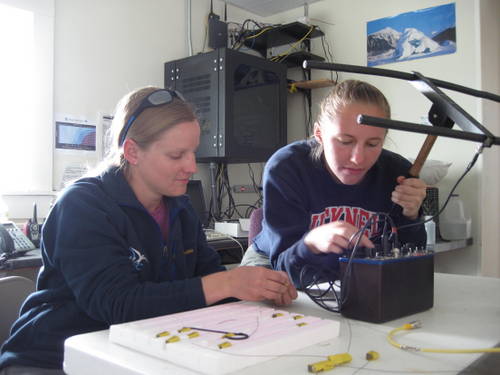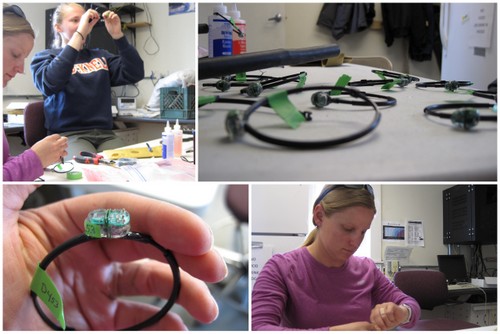Weather Rollercoaster
Two days ago, it was almost 60 degrees and I was comfortable in a short sleeve shirt at camp. Today, it was in the 20s and snowing. It’s amazing how quickly the weather can change here! All the advice that I was given about dressing in layers is absolutely true!
Here’s a view of Toolik Field Station this morning, from behind Team Squirrel’s lab.
http://youtu.be/p4ongkFiVnM
No field work= work in the lab
Cory expected that the squirrels would not be very active in the cold, snowy weather, so we did not trap today. Instead we cleaned the lab and entered data into the computer from the paper sheets where we record information about each squirrel we process. After lunch, Kate and I tested the radio transmitters that we will put on a few specific squirrels that we will need to locate often for an upcoming experiment. It was pretty simple: set the dials to the correct frequency and listen for the pinging sound. If we heard the sound, the transmitter was working properly.

Next, Cory taught us how to make the light collars that some of the squirrels wear. It is basically a zip tie with a rubber cushion around it that is attached a light sensor to with wire, then sealed with epoxy. The collars are placed around the neck of the squirrel and they measure the amount of sunlight that the squirrel is exposed to. This will give us an idea of when the squirrels are underground (in burrows) and when they are above ground. These light loggers are smaller and much less expensive than light loggers that the scientists used in the past.

Lifelong Learners
I am pretty passionate about being a lifelong learner and I am in great company here at Toolik Field Station. After dinner, more than 20 people piled into the community center to listen to a scientist named Shaid Naeem give a fascinating, though complex talk about biodiversity. The learning at Toolik does not stop here. Mealtime conversations often revolve around scientists discussing their discoveries and learning about the work of other science teams at Toolik. At the science talk tonight, I sat next to a researcher that works with insects. I showed her the picture of the caterpillar that I found yesterday and she passionately told me all about it (It eventually becomes a tiger moth and can stay in caterpillar form for up to 14 years if the conditions are not right for it to metamorphose into a moth!).
The passion that these researchers have for their work, learning, and science in general is exciting to witness.


Comments